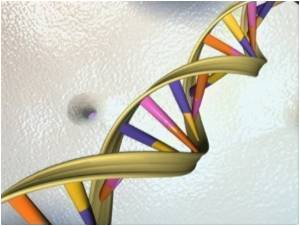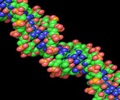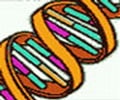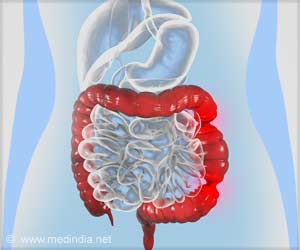
"This pathway that repairs cross-linking damage is a common factor in a variety of cancers, including breast cancer and especially in ovarian cancer. If the pathway is active, it undoes the therapeutic effect of cisplatin and similar therapies," said co-corresponding author Junjie Chen, professor and chair of MD Anderson's Department of Experimental Radiation Oncology.
The platinum-based chemotherapies cisplatin, carboplatin and oxaliplatin work by causing DNA cross-linking in cancer cells, which blocks their ability to divide and leads to cell death. Cross-linking occurs when one of the two strands of DNA in a cell branches out and links to the other strand.
Cisplatin and similar drugs are often initially effective against ovarian cancer, Chen said, but over time the disease becomes resistant and progresses.
Scientists have known that the protein complex known as FANCI-FANCD2 responds to DNA damage and repairs cross-linking, but the details of how the complex works have been unknown.
"The breakthrough in this research is that we finally found an enzyme involved in the repair process," Chen said.
Advertisement
In a series of experiments, Chen and colleagues demonstrated how the protein complex summons FAN1, connects with the enzyme and moves it to the site of DNA cross-linking. They also showed that FAN1 cleaves branched DNA but leaves the normal, separate double-stranded DNA alone. Mutant versions of FAN1 were unable to slice branched DNA.
Advertisement
"It's like a lock and key system, once they fit, FAN1 is recruited," Chen said.
Analyzing the activity of this repair pathway could guide treatment for cancer patients, Chen said, with the platinum-based therapies used when the cross-linking repair mechanism is less active.
Scientists had shown previously that DNA repair was much less efficient when FANCI and FANCD2 lack the single ubiquitin. DNA response and damage-repair proteins can be recruited to damage sites by the proteins' ubiquitin-binding domains.
The team first identified a protein that had both a ubiquitin-binding domain and a known nuclease domain. When they treated cells with mitomycin C, which promotes DNA cross-linking, that protein, then known as KIAA1018, gathered at damage sites. This led them to the functional experiments that established its role in DNA repair.
They renamed the protein FAN1, short for Fanconi anemia-associated nuclease 1. The FANCI-FANCD2 complex is ubiquitinated by an FA core complex containing eight FA proteins. These genes and proteins were discovered during research of Fanconi anemia, a rare disease caused by mutations in 13 fanc genes that is characterized by congenital malformations, bone marrow failure, cancer and hypersensitivity to DNA cross-linking agents.
Chen said the FANCI-FANCD2 pathway also is associated with the BRCA1 and BRCA2 pathways, which are involved in homologous recombination repair. Scientists know that homologous recombination repair is also required for the repair of DNA cross-links, but the exact details remain to be resolved, Chen said. Mutations to BRCA1 and BRCA2 are known to raise a woman's risk for ovarian and breast cancers and are found in about 5-10 percent of women with either disease.
Source-ANI











